
What do you need to do to get your blog post noticed? When we are drowning in a sea of content, how can you make your post stand out? How can you maximize the chances that people will actually find your blog post, read it and then hopefully share it?
In the 15 years I’ve been blogging, I’ve seen that there are three critical elements that help in getting your post noticed. There are, of course, many other things you can do to improve your posts… but I want to start with three elements that can help get people to follow the link and VIEW your post.
First, though, let’s agree that almost everyone today finds your blog post through either of three mechanisms:
- Search results
- Social media sharing
- News aggregators – sites like Reddit, Hacker News, Digg, etc.
Given that, your goal is make your post accessible in a way that supports these three mechanisms and makes people want to choose YOUR link to follow versus all the other ones they see in search results or in social media streams.
Three caveats before I begin:
- There’s a separate discussion we could have about the SEO work you might do to make your post appear in search results… but let’s park that discussion and just assume for the moment that your post is visible in search results.
- Think of what I say below in terms of someone finding your post and then sharing it on Twitter, Facebook, Google+, LinkedIn, whatever… or on news aggregation sites like Reddit or Hacker News… all they do is drop the URL in. Typically the title “automagically” appears. You want to make it easy for this to “just work” for them.
- There is no magic silver bullet. These are just suggestions. There are many other factors that can come into play, including just random accidents of timing. But these are tips that can certainly help.
And for the “Too Long; Didn’t Read” crowd, here’s the quick summary:
- You need a strong title that someone would click if that was all they saw on a site like Twitter or Reddit.
- You need a first few sentences that when seen in a “preview” on, say, Facebook, would make someone go “Huh?” and want to learn more.
- You need a visually compelling image that will draw viewers’ eyes to your link versus the other ones.
With that, let’s dive into more detail…
1. If You Saw Only Your Title, Would You Click The Link?
The first thing I tell people is simply this:
If you saw this title in your Twitter feed, would YOU click the link to find out more?
If yes, great.
If no, think of a title that WOULD make you click the link. (And in place of “Twitter”, it could be any other social network…)
The companion to this question is:
If someone in your target audience saw this title in his/her Twitter feed, would he/she click the link to find out more?
Be harsh on yourself when you are asking this question. A Twitter feed is a FIREHOSE of information being sprayed out at you… in the midst of all of this, would your title cause someone to click the link?
And yes, this is exactly why Upworthy comes up with such cringe-worthy headlines as (and these are all real):
- She took off her bra and put it over Paul Krugman’s face because science.
- Her Olympic dreams were nearly crushed, until an unlikely coach saved the day.
-
The 4 most ridiculous arguments people use to defend Bill Cosby, presented by Amy Schumer.
and Buzzfeed uses headlines like these:
- 21 Things That Happen To Everyone Who Wears Makeup
- This Gay Teen Is Taking The Internet By Storm With Her Feminist Yearbook Quote
- Can We Talk About How Hot Drake Is In This Instagram Photo?
Mind you… I DON’T RECOMMEND YOU FOLLOW THIS PATTERN! (And in fact, social networks are fighting back against this kind of “click-baiting”!)
But it works.
Ask yourself… didn’t you want to click on at least one of those headlines to learn more?
Upworthy, Buzzfeed and all these similar sites understand that the title is what makes people want to click. (And yes, they do A/B testing to try out many different titles for a post before they converge on the one that will work the best… but they have zillions of visitors and can easily do this.)
Now, you also have to have a title that fits in with the kind of style you want to have on your blog. And, going back to “discovery”, you want to have a title that has some meaning related to your content.
Similarly, you want a title this relevant to your content! You don’t want people to feel betrayed if they followed a link because of a title – only to find out the text is something completely different.
With those thoughts in mind, the question goes back to – if you saw this title in a social network, would you click the link?
A strong title is critical.
2. Do Your First Sentences Make People Want To Know More?
This is one that people often miss… they come up with a great title but the first sentence is insanely boring.
Remember this…
most social networks and search results SHOW A PREVIEW of your text!
Twitter doesn’t… it just shows the title. But Facebook… Google+… LinkedIn… others… all show a preview of the first sentence or two of your text. Search results from Google and other search engines typically show a preview, too.
Yes, there are ways to influence what search engines or social networks show as the preview… but the simplest way is just to write compelling sentences that will intrigue people!
Here’s an example from my own Facebook feed that I think works well:

First, the title:
Yet another reason to love Netflix: It’s helping to kill reality TV
Yes, okay, so maybe it’s a bit inflated, but it got me to pay attention.
But notice the text:
15 years ago, the reality TV craze took off in America and many people assumed that quality television programming was doomed to extinction. The reasons for this were…
Wait.. wait… What are those reasons? How is Netflix killing reality TV?
I WANT TO KNOW!
See how it is sucking me in? (FYI, here’s that post if you want to read it.)
Now, there’s many ways to do create this introductory text… and yes, there’s really an art to it. One simple way is:
Ask questions!
I do this a lot. Perhaps too much… but I’ve found it works. Here’s a recent post of mine:

Ignoring the fact that I royally screwed up on the title and entered “March” instead of “May” (subsequently fixed, but not before it went out in social media), look at how I began:
Would you like to learn more about what the WSIS+10 Review process is all about? How can you participate in the process if you are not with a government? What is “WSIS” all about anyway — and why should you care? Those questions
Why yes… I would like to know the answers to those questions… let me click on the link and see what the answers are!
Scroll back up and notice the questions I used at the beginning of this post. Did you see them in a preview? Did they perhaps pull you into reading this post?
Questions work.
Think of questions you are answering in your article… put them up in that first paragraph.
Sometimes questions don’t work with your text, of course. Here’s another example of a recent post I wrote:

Again… a title designed to intrigue people: who was struck by cancer? Was it anyone you knew? What effect will it have on him? (i.e. me)
And then the introductory paragraph:
I haven’t written about our journey with cancer for a while because my wife’s own journey has been one of the ongoing tedium of Tamoxifen … another day, another pill… and more fatigue, joint pain and so many more issues. It is, though, unfortunately
What journey with cancer? (for those who don’t know about it) What is going on?
The goal is again to get people to FOLLOW THE LINK.
3. Do You Have An Image That Draws Attention To Your Post?
Look back at the three examples I gave you above… all three of them have an image that shows up in the preview. This draws people attention to your post when it shows up in a newsfeed. (There was a study that I can’t seem to find right now that showed how much higher of a click-through rate a shared post had if an image was included. But think of your own usage – which links do you click through?)
If the first one about Netflix, there is an image of smiling young actress. I actually have no clue who she is, even after reading the article… but the photo is something visual that will draw people in.
My second example from CircleID isn’t the best in my opinion. I mean, it’s my standard headshot, so perhaps it helps in the “Gee, he looks serious so maybe I should read this because it’s a serious matter” kind of way.
But it’s better than NO image.
The third example with the cemetery is again a visually interesting image. It pulls you in.
Now – how do you get an image to use?
I generally get my own images from three sources:
- Photos I have taken … or photos that someone else I know has taken and then sent to me with the permission to use the image. This is the easiest and simplest. If it is your photo there’s no need to worry about attribution. You can modify it in any way you want. Generally these are the photos I try to get, either myself – or from a colleague or friend who is at an event or something like that.
- Flickr’s Creative Commons-licensed photos – Flickr provides a wonderful service to bloggers by letting people upload photos with a Creative Commons license that allows other people to use the photos under certain conditions. Generally this means that you need to include a link to the photo as a source of attribution. In some cases there might be restrictions on commercial usage, but it varies. Flickr supports a range of CC licenses that you can search on:
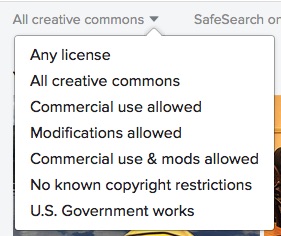
I used Flickr to find the image I used in this post.
A companion point is that if you upload photos to Flickr, please do consider putting them under a CC license so that other people can use them like this.
- Screenshots. I’m a heavy user of Skitch on my Mac and use it pretty much every day for images that I put into blog posts. Sometimes it might be the logo of a website I am writing about… or the logo of an event… or it might be an image from a website … … or, as in a case today, I might take a screenshot of a PowerPoint slide where I very quickly created an image to use in a post. 🙂 There are many other similar tools for Mac and Windows – the key point is that you can rapidly take and then modify/resize an image.
BE REALLY, REALLY CAREFUL HERE! Just because “it’s on the Internet” does NOT mean you can just freely capture an image and use it. There’s a whole other post that could be written about image licenses… and many good articles can be found out there. When in doubt, do NOT use an image you capture if you do not know that the person who made the image available would not want you to. For example, I often use event logos freely because typically the event organizers WANT all the publicity they can get… and by using their logo when I write about the event I’m reinforcing their branding and helping spread the word. But some events are very sensitive about what logo gets used and so you need to always check and see if they provide guidance or restrictions.
I know some folks like the image collection at the Internet Archive and there’s many other sites. I generally avoid “stock photography” purely because so many other people are often using the same images… but I have sometimes used photos from such sources.
The key point is that you need an image of some type to help draw people to your post.
You do, of course, want to be sure that the image has some relation to the content of your article. The best images are ones that reinforce the message and ideas in the article.
As I Said At The Beginning…
There are many more things you can do to draw attention to your post, but these are three of the critical elements I have found help in getting attention to posts.
But don’t trust me…
… think about these three things when you are next scanning down your Facebook feed… or your LinkedIn feed… or Google+ … or Twitter…
What draws you in?
What makes you click/tap on one link versus another one?
What makes you reshare/retweet a link?
If you think about it, odds are that it will come down to some combination of:
- the title grabbed your attention; and/or
- the image grabbed your attention; and
- the preview text reinforced that following the link would be worthwhile.
And in the end you clicked/tapped the link…
Learn from what drives your behavior!
Comments are definitely welcome… please feel free to leave them below or on social networks where this gets posted.
I look forward to being attracted to your posts! 🙂
An audio commentary on this topic is available:
Image credit: Paul Schreiber on Flickr
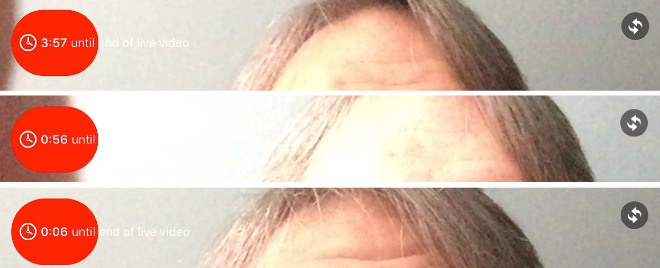
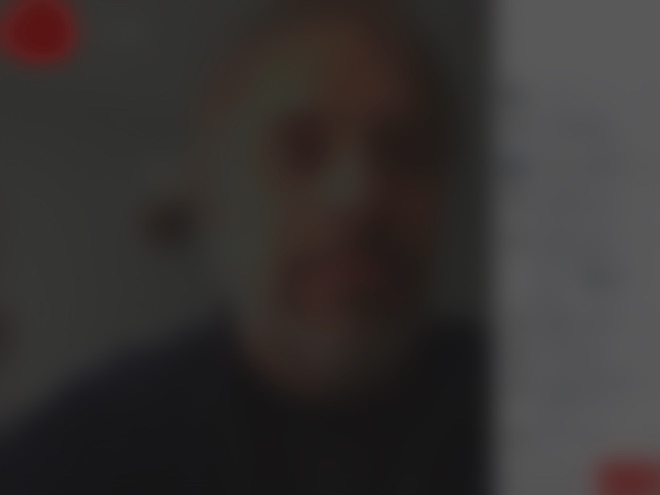
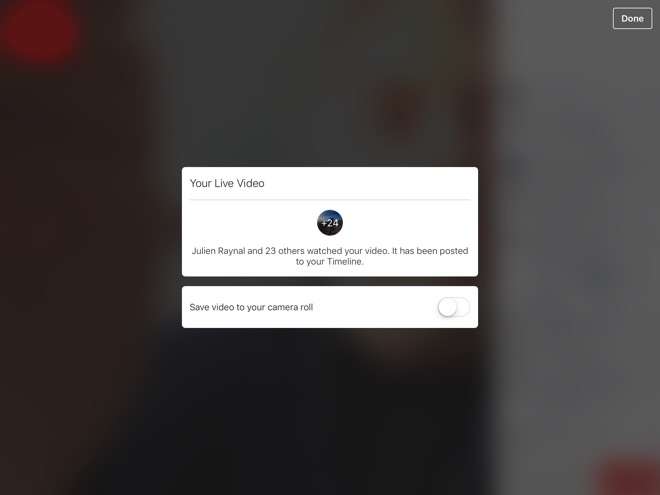
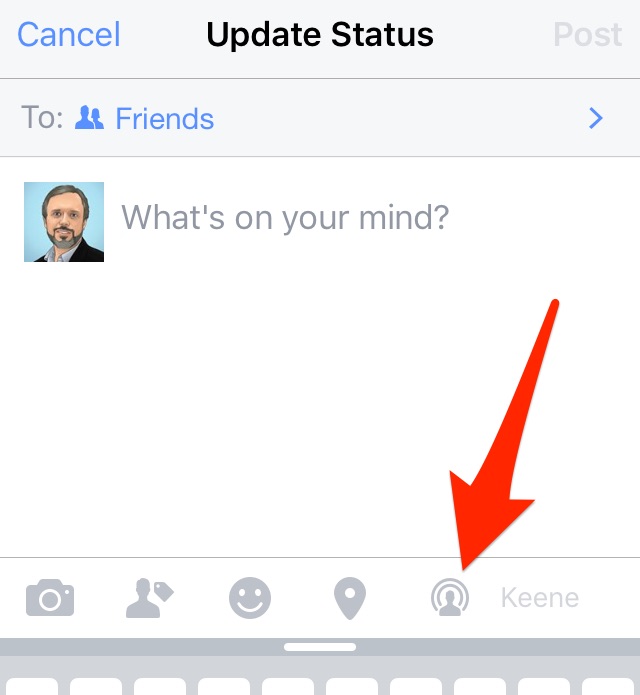
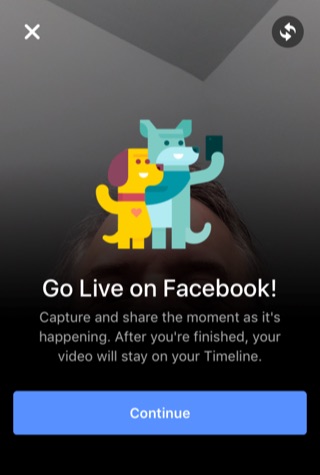
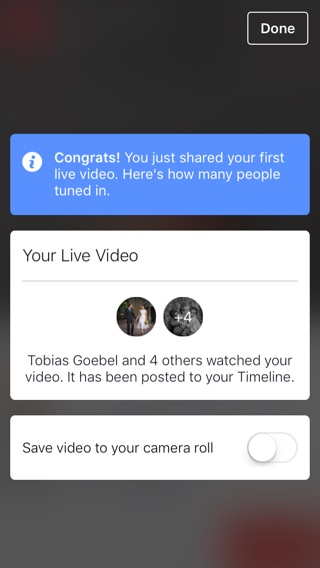

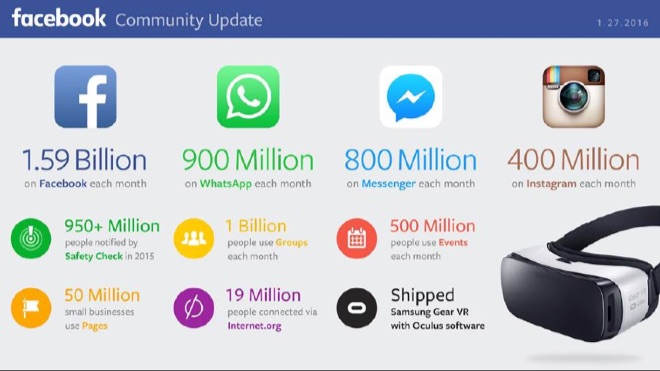 This week Facebook released amazing quarterly results for Q4 of 2015 that truly show what a HUGE hub of activity Facebook has become.
This week Facebook released amazing quarterly results for Q4 of 2015 that truly show what a HUGE hub of activity Facebook has become. 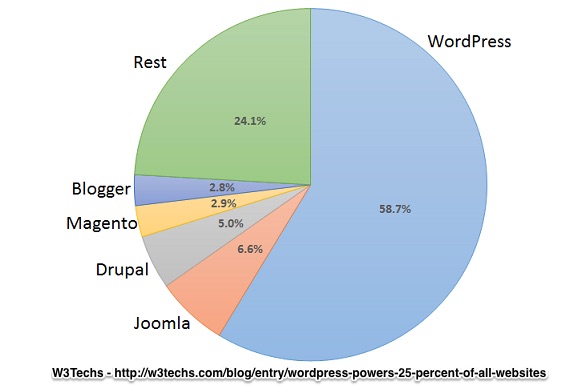
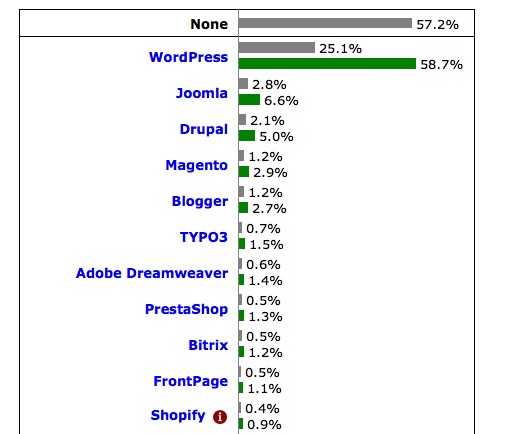

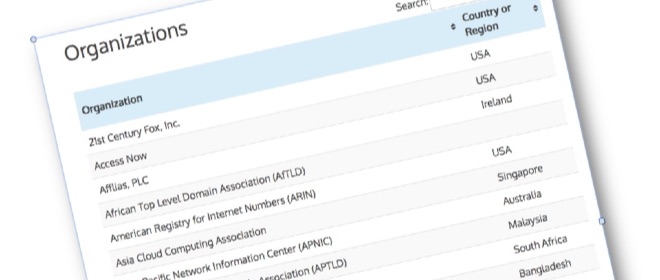
 About three weeks ago,
About three weeks ago, 
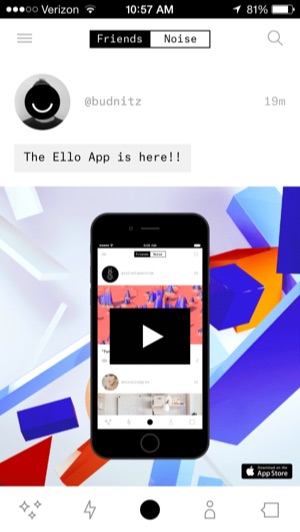 Today the team at Ello released an iOS app so that iPhone/iPad users can now very easily add posts and photos into Ello, read Ello posts and interact with people throughout the Ello community.
Today the team at Ello released an iOS app so that iPhone/iPad users can now very easily add posts and photos into Ello, read Ello posts and interact with people throughout the Ello community.




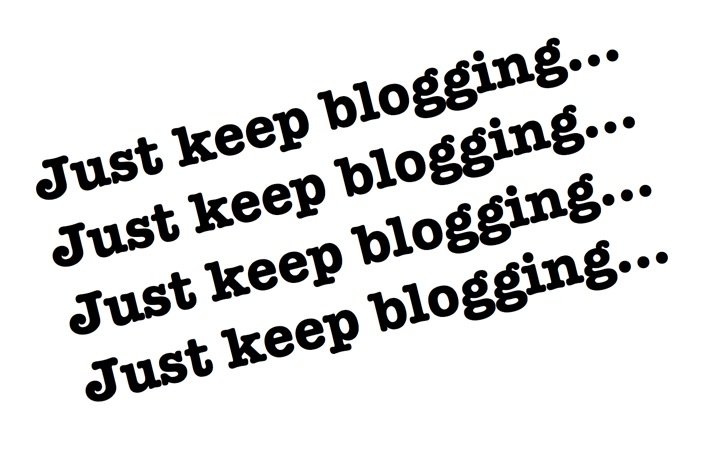 Fifteen years ago today I did something that I had no clue would transform my life in the years ahead. On May 10, 2000, I was sitting in cavernous basement office of Linuxcare on Townsend Street in San Francisco. It was after 9pm and being a visitor I was just working late. Sitting there, I created an account on a site called
Fifteen years ago today I did something that I had no clue would transform my life in the years ahead. On May 10, 2000, I was sitting in cavernous basement office of Linuxcare on Townsend Street in San Francisco. It was after 9pm and being a visitor I was just working late. Sitting there, I created an account on a site called